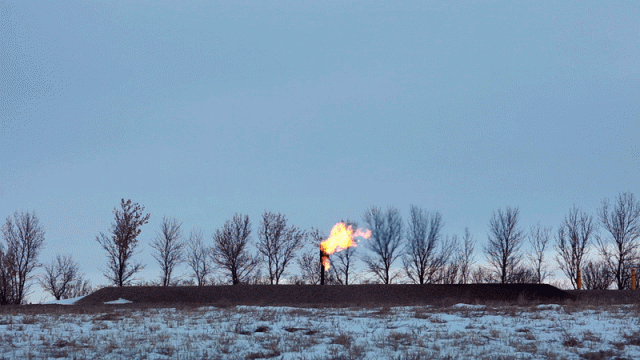North Dakota Gas Flaring Down 24 Percent Over The Last Two Years

If you asked a representative sample of North Dakotans about their impression of the gas flaring issue in the state, how many of them do you suppose would say that flaring has decreased over the last two years? And not only decreased, but dropped by as much as 24 percent?
Back in September when the North Dakota Industrial Commission – the triumvirate made up of Governor Jack Dalrymple, Agriculture Commissioner Doug Goehring, and Attorney General Wayne Stenehjem which regulates, among other things, oil and gas development in the state – made some changes to a flaring reduction plan they had implemented in April 2014.
The changes were ultimately very modest, but they prompted no small amount of breathless reporting from the state’s media, not to mention consternation from environmental activists who accused the commission of being too friendly to the oil and gas industry (despite the long-term flaring goal being made tougher).
What’s ironic is that the most recent report on oil and gas development from the Department of Mineral Resources released earlier this month showed dramatic improvements in the flaring situation. Improvements which got very little attention from the media or activists.
First, it’s worth nothing that the flaring percentage has fallen off a cliff over the last three years. In the most recent report from the DMR, flaring was down to 14 percent, which is the lowest rate in at least three years:
When we talk about the flaring percentage critics of the oil and gas industry often say it can be misleading. After all, if the total amount of gas produced goes up, the flaring rate can go down even if the volume of gas flared goes up.
That’s fair, but even if we look at the volume of gas flared what we see is a 24 percent decline over the last two years – the peak of the oil boom – and a nearly 8 percent decline over the last three years (raw numbers here).
What’s remarkable is that you can see the progress the oil and gas industry has made on flaring by putting the volume of gas flared in the context of the amount of gas produced and captured. Note that two of those lines show huge increases, while the other shows a decrease. The oil and gas industry has not only kept flaring largely in check amid huge increases in gas production, but they’ve actually reduced it substantially:
Flaring gets a lot of attention, as it should. It’s wasteful. We’re burning off a valuable commodity which could be put to all manner of uses from heating homes to developing other products. It is a valid topic for news coverage and public policy debate.
But when activists and reporters decry flaring increases while remaining quiet about flaring decreases you get the idea that the goal isn’t to illuminate the flaring issue so much as to use it as a weapon against an unsympathetic industry.







